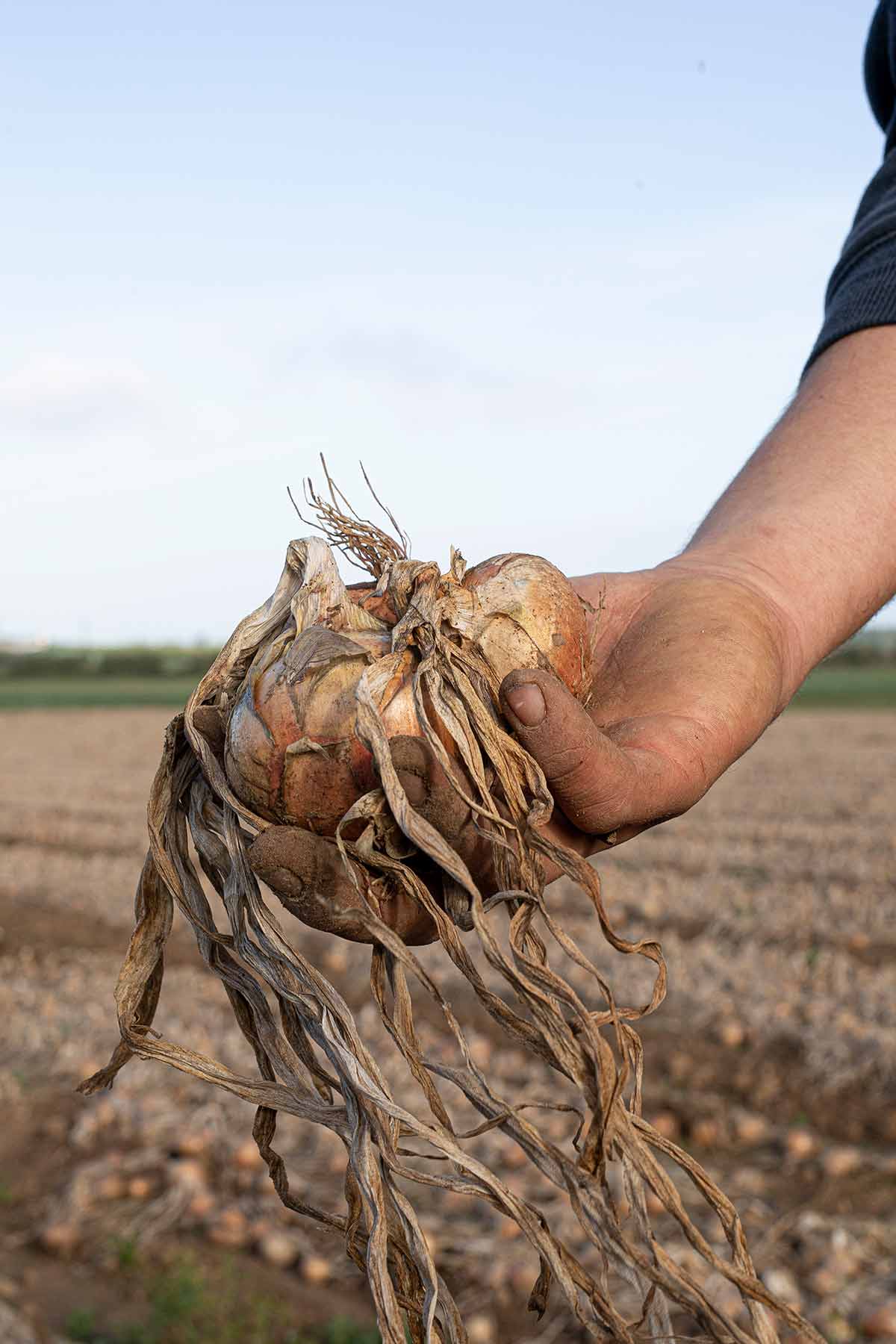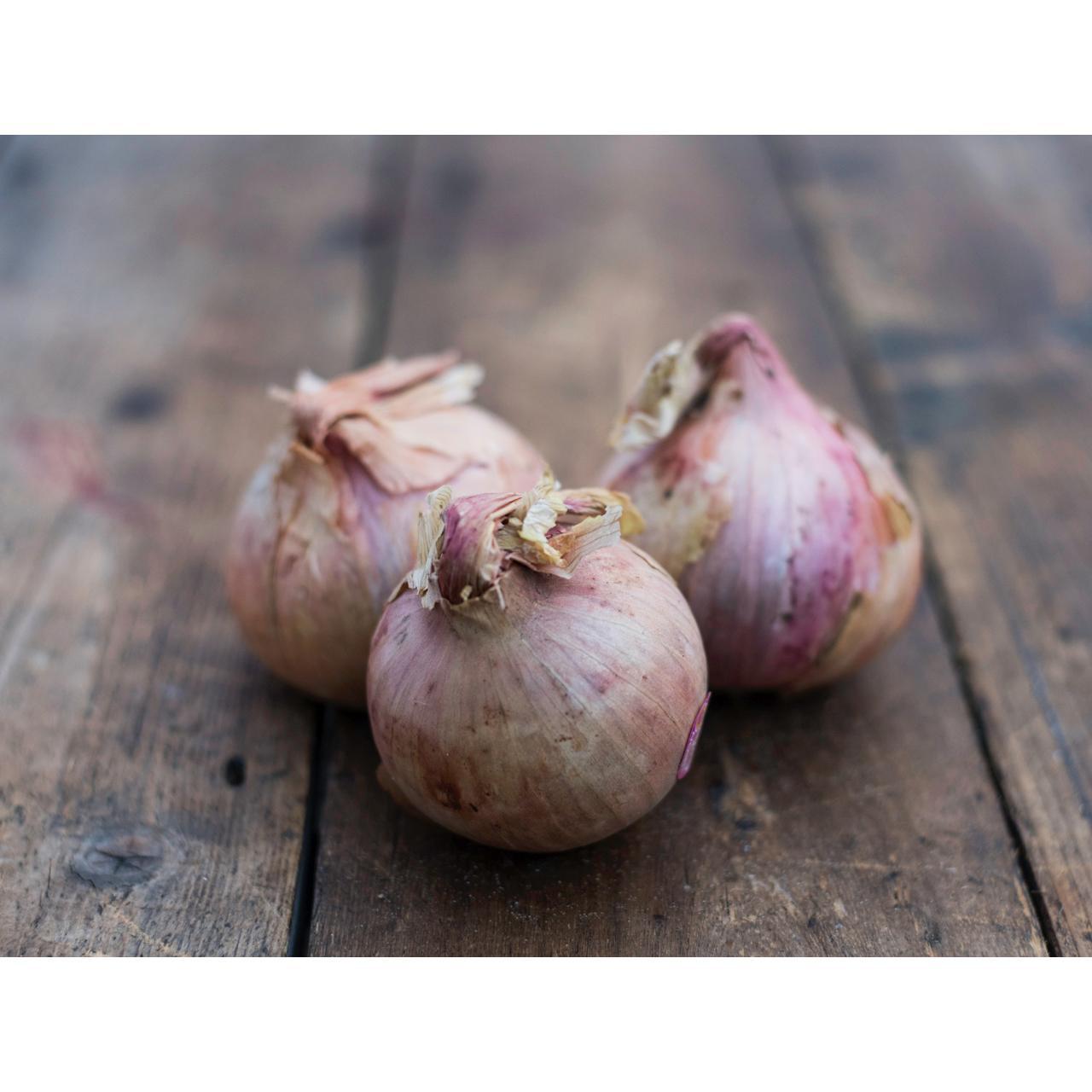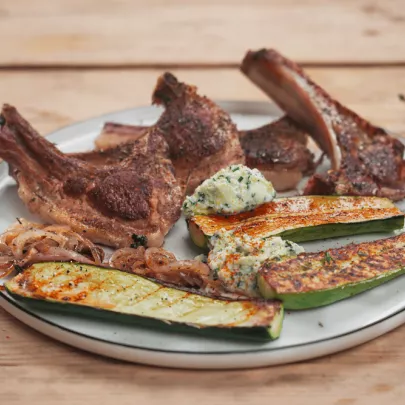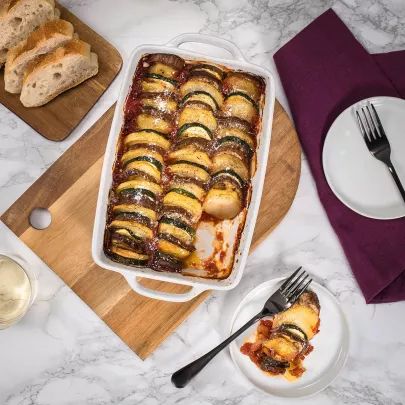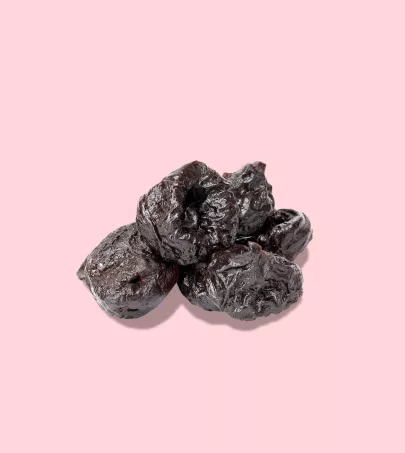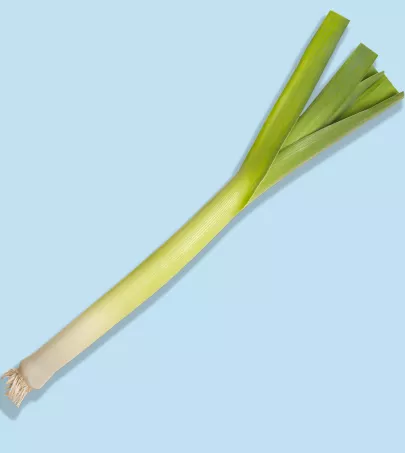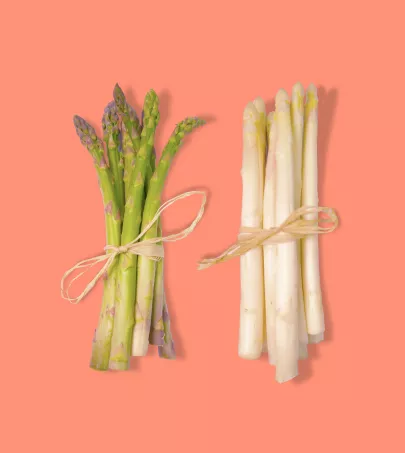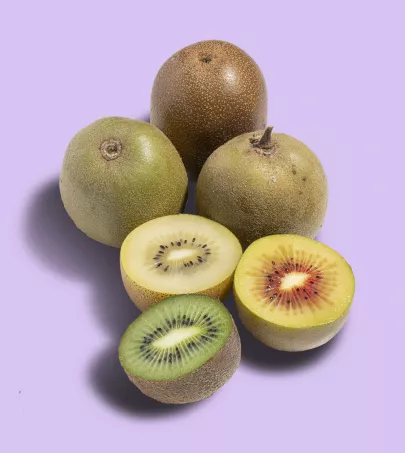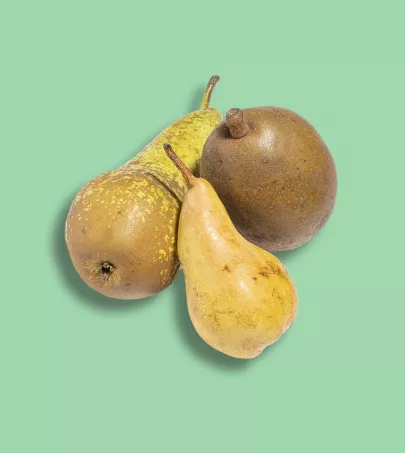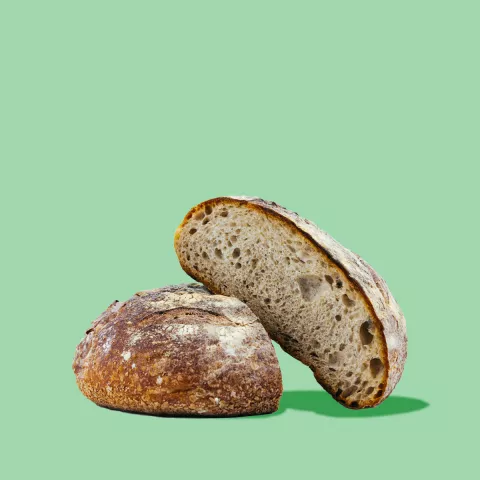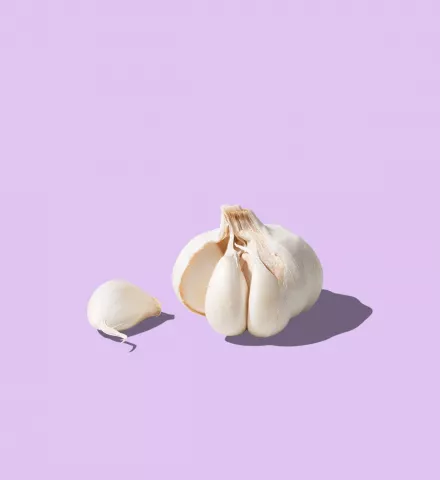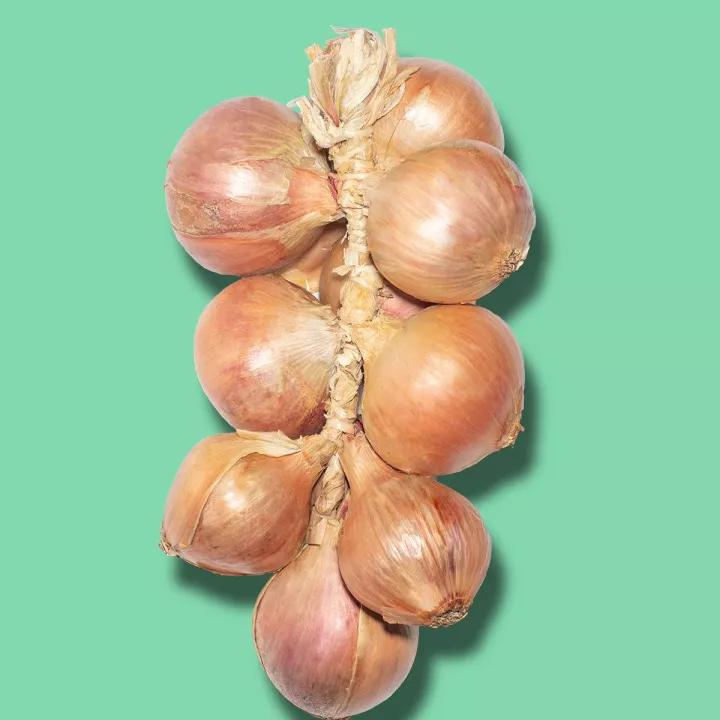
This pinkish brown bulb was first brought to France from Portugal in the 17th century. Nowadays, it is right at home in the sunshine of northern Finistère. That's where the PDO awarded in 2010 stipulates that these vegetables must be sown, grown, harvested and dried, before being braided, usually by hand. Their defining characteristics are their crunchiness and typical sweetness.
What you need to know
Who would have thought it? The Roscoff onion, first discovered in Portugal by a Capuchin monk, has acclimatized perfectly to Brittany. It positively thrives on the mild oceanic climate, which is characterized by minimal temperature changes and the famous drizzle. So much so that farmers intervene in its growth very little, if at all. Seeds of the Keravel or Jack variety are sown in March in aerated, deep and fertile soil and proceed to grow without irrigation or fertilization. Just a little bit of weeding to ensure they get their fair share of light, water and minerals. In summer (between July and August), when the still-green onion leaves are falling over, the bulbs are pulled up and their roots cut by machine. They are then left to pre-dry whilst still on the ground. Approximately ten days later, they are harvested, usually by hand, and then stored outside, facing into the wind and sheltered from the rain. Once they are dry, Roscoff onions are checked, scrubbed, trimmed and then gathered into braids weighing a kilo each, to ensure that they keep well - all without any anti-sprouting treatment!
Characteristics
Look
Taste
Nutritional benefits
Where do we start? The Roscoff onion is rich in vitamins and mineral salts, there are the antibacterial properties that explain why it is almost always used in marinades.
Editor's note
How to use
Storing Roscoff onions PDO
For several months in a cool, dry, well-ventilated space.
Preparing Roscoff onions PDO
The Roscoff onion must be peeled before cooking. If this brings a tear to your eye, try doing it under a little running water.
Using Roscoff onion PDO
Raw in a salad, with meat, in a marinade or in a galette. As for hot dishes, it's delicious in a stuffing, made into a confit, fried or cooked down for a soup.
Pair with
With potatoes, zucchini, mixed salad leaves, apples, shellfish and crustaceans, a piece of beef, etc. That allows for a variety of wines, but we recommend a white or red Chinon.

